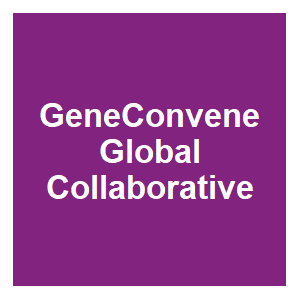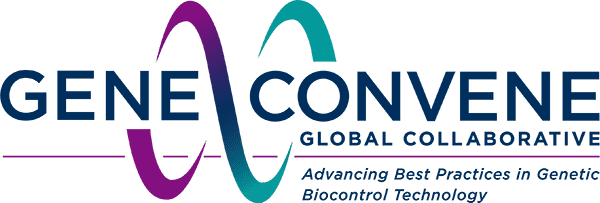Ecological Relationships of Mosquito Disease Vectors: Anticipating Risk Assessment of Gene Drive Technologies

|
Stephanie James, Hector Quemada and David O'Brochta,
GeneConvene Global Collaborative,
2021.

GeneConvene Global Collaborative Webinar Series: Ecological Relationships of Mosquito Disease Vectors: Anticipating Risk Assessment of Gene Drive Technologies April 21, 28, May 5, 12, 19 An often-raised concern for the development of genetically modified mosquito technologies, particularly those involving gene drive, as tools to prevent disease transmission is the limitation of our understanding of the roles these species may play within the ecosystem. This series of webinars begins to explore what is known about the ecological relationships of mosquito vectors with regard to major types of species interactions. The speakers also will describe some of the methods by which potential interactions that may impact human or animal health and the environment can be examined in the context of case-by-case risk assessment and safety testing. There will be 2 speakers per meeting. Each will speak for 30 minutes followed by a joint question and answer session. Not a convenient time? Each webinar will be recorded and promptly posted on the GeneConvene Virtual Institute,
Video Table of Contents available on YouTube References Related Dr. Juliano’s Presentation. (on this page)References Related Dr. Connolly’s Presentation. (on this page)
Video Table of Contents available on YouTube References Related Dr. Rwomushana’s Presentation. (on this page)References Related Dr. Collins’ Presentation. (on this page)
Video Table of Contents available on YouTube References Related Dr. Dada’s Presentation. (on this page)References Related Dr. Foster’s Presentation. (on this page)
Video Table of Contents available on YouTube References Related Dr. Besansky’s Presentation. (on this page)References Related Dr. Yan’s Presentation. (on this page)
Video Table of Contents available on YouTube References Related Dr. Higgs’s Presentation. (on this page)References Related Dr. Hosack’s Presentation. (on this page)
ADDITIONAL REFERENCESReferences Related Dr. Juliano’s Presentation. go back^
Fader, J. E., & Juliano, S. A. (2013). An empirical test of the aggregation model of coexistence and consequences for competing container-dwelling mosquitoes. Ecology, 94(2), 478-488. https://doi.org/10.1890/12-0123.1Gorman, K., Young, J., Pineda, L., Marquez, R., Sosa, N., Bernal, D., . . . Caceres, L. (2016). Short-term suppression of Aedes aegypti using genetic control does not facilitate Aedes albopictus. Pest Management Science, 72(3), 618-628. https://doi.org/10.1002/ps.4151 Kraemer, M. U. G., Sinka, M. E., Duda, K. A., Mylne, A. Q. N., Shearer, F. M., Barker, C. M., . . . Hay, S. I. (2015). The global distribution of the arbovirus vectors Aedes aegypti and Ae. albopictus. Elife, 4, 18. https://doi.org/10.7554/eLife.08347 Leisnham, P. T., LaDeau, S. L., & Juliano, S. A. (2014). Spatial and Temporal Habitat Segregation of Mosquitoes in Urban Florida. Plos One, 9(3), 10. https://doi.org/10.1371/journal.pone.0091655 Murrell, E. G., Damal, K., Lounibos, L. P., & Juliano, S. A. (2011). Distributions of Competing Container Mosquitoes Depend on Detritus Types, Nutrient Ratios, and Food Availability. Annals of the Entomological Society of America, 104(4), 688-698. https://doi.org/10.1603/an10158 References Related Dr. Connolly’s Presentation. go back^
Gillies, M. T., & Smith, A. (1960). The effect of a residual house-spraying campaign in East Africa on species balance in the Anopheles funestus group. The replacement of A. funestus Giles by A. rivulorum Leeson. Bulletin of Entomological Research, 51(2), 243-252. https://doi.org/10.1017/S0007485300057953 Qureshi, A., & Connolly, J. B. (2021). A systematic review assessing the potential for release of vector species from competition following insecticide-based population suppression of Anopheles species in Africa. .Parasites Vectors, 14, 462 https://doi.org/10.1186/s13071-021-04975-0 Russell, T. L., Govella, N. J., Azizi, S., Drakeley, C. J., Kachur, S. P., & Killeen, G. F. (2011). Increased proportions of outdoor feeding among residual malaria vector populations following increased use of insecticide-treated nets in rural Tanzania. Malaria Journal, 10, 10. https://doi.org/10.1186/1475-2875-10-80 Sougoufara, S., Harry, M., Doucoure, S., Sembene, P. M., & Sokhna, C. (2016). Shift in species composition in the Anopheles gambiae complex after implementation of long-lasting insecticidal nets in Dielmo, Senegal. Medical and Veterinary Entomology, 30(3), 365-368. https://doi.org/10.1111/mve.12171 Zhou, G. F., Afrane, Y. A., Vardo-Zalik, A. M., Atieli, H., Zhong, D. B., Wamae, P., . . . Yan, G. Y. (2011). Changing Patterns of Malaria Epidemiology between 2002 and 2010 in Western Kenya: The Fall and Rise of Malaria. Plos One, 6(5), 12. https://doi.org/10.1371/journal.pone.0020318
References Related Dr. Rwomushana’s Presentation. go back^ Barratt, B. I. P., Moeed, A., & Malone, L. A. (2006). Biosafety assessment protocols for new organisms in New Zealand: Can they apply internationally to emerging technologies? Environmental Impact Assessment Review, 26(4), 339-358. https://doi.org/https://doi.org/10.1016/j.eiar.2005.11.008 Cock, M. J. W., Lenteren, J. C. v., Brodeur, J., Barratt, B. I. P., Bigler, F., Bolckmans, K., . . . Parra, J. R. P. (2009). The use and exchange of biological control agents for food and agriculture. Food and Agriculture Organization, Commission on Genetic Resources for Food and Agriculture COMMISSION ON GENETIC RESOURCES FOR FOOD AND AGRICULTURE. Neuenschwander, P., Herren, H. R., Harpaz, I., Badulescu, D., Akingbohungbe, A. E., Wood, R. K. S., & Way, M. J. (1988). Biological control of the cassava mealybug, Phenacoccus manihoti by the exotic parasitoid Epidinocarsis lopezi in Africa. Philosophical Transactions of the Royal Society of London. B, Biological Sciences, 318(1189), 319-333. https://doi.org/10.1098/rstb.1988.0012 Russell, T. L., Govella, N. J., Azizi, S., Drakeley, C. J., Kachur, S. P., & Killeen, G. F. (2011). Increased proportions of outdoor feeding among residual malaria vector populations following increased use of insecticide-treated nets in rural Tanzania. Malaria Journal, 10, 10. https://doi.org/10.1186/1475-2875-10-80 Secretariat of the International Plant Protection Convention. (2005). ISPM 3: Guidelines for the export, shipment, import and release of biological control agents and other beneficial organisms. International Plant Protection Convention.
References Related Dr. Collins’ Presentation. go back^ American Mosquito Control Association. (2021). Do purple martins help reduce mosquitoes? Retrieved from https://www.mosquito.org/page/FAQ#Do%20Purple%20Martins%20help%20reduce%20mosquitoes? Bohmann, K., Monadjem, A., Lehmkuhl Noer, C., Rasmussen, M., Zeale, M. R. K., Clare, E., . . . Gilbert, M. T. P. (2011). Molecular Diet Analysis of Two African Free-Tailed Bats (Molossidae) Using High Throughput Sequencing. Plos One, 6(6), e21441. https://doi.org/10.1371/journal.pone.0021441 Collins, C. M., Bonds, J. A. S., Quinlan, M. M., & Mumford, J. D. (2019). Effects of the removal or reduction in density of the malaria mosquito, Anopheles gambiae s.l., on interacting predators and competitors in local ecosystems. Medical and Veterinary Entomology, 33(1), 1-15. https://doi.org/https://doi.org/10.1111/mve.12327 Jackson, R. R., Deng, C., & Cross, F. R. Convergence between a mosquito-eating predator’s natural diet and its prey-choice behaviour. Royal Society Open Science, 3(12), 160584. https://doi.org/10.1098/rsos.160584 Stephens, D. W., Brown, J. S., & Ydenberg, R. C. (Eds.). (2007). Foraging: Behavior and Ecology. Chicago, IL: The University of Chicago Press.
References Related Dr. Dada’s Presentation. go back^ Caragata, E. P., Tikhe, C. V., & Dimopoulos, G. (2019). Curious entanglements: interactions between mosquitoes, their microbiota, and arboviruses. Curr Opin Virol, 37, 26-36. https://doi.org/10.1016/j.coviro.2019.05.005 Coon, K. L., Brown, M. R., & Strand, M. R. (2016). Mosquitoes host communities of bacteria that are essential for development but vary greatly between local habitats. Mol Ecol, 25(22), 5806-5826. https://doi.org/10.1111/mec.13877 Gendrin, M., & Christophides, G. K. (2013). The Anopheles Mosquito Microbiota and Their Impact on Pathogen Transmission. In S. Manguin (Ed.), Anopheles mosquitoes – New insights into malaria vectors. Guégan, M., Tran Van, V., Martin, E., Minard, G., Tran, F. H., Fel, B., . . . Valiente Moro, C. (2020). Who is eating fructose within the Aedes albopictus gut microbiota? Environ Microbiol, 22(4), 1193-1206. https://doi.org/10.1111/1462-2920.14915 Krajacich, B. J., Huestis, D. L., Dao, A., Yaro, A. S., Diallo, M., Krishna, A., . . . Lehmann, T. (2018). Investigation of the seasonal microbiome of Anopheles coluzzii mosquitoes in Mali. Plos One, 13(3), e0194899. https://doi.org/10.1371/journal.pone.0194899
References Related Dr. Foster’s Presentation. go back^ Foster, W. A. (2020). Pollination of plants by disease vectors: an assessment. Retrieved from https://www.geneconvenevi.org/pollination-of-plants-by-disease-vectors-a-risk-assessment/ Gary Jr, R. E., & Foster, W. A. (2004). Anopheles gambiae feeding and survival on honeydew and extra-floral nectar of peridomestic plants. Medical and Veterinary Entomology, 18(2), 102-107. https://doi.org/https://doi.org/10.1111/j.0269-283X.2004.00483.x Gouagna, L.-C., Poueme, R. S., Dabiré, K. R., Ouédraogo, J.-B., Fontenille, D., & Simard, F. (2010). Patterns of sugar feeding and host plant preferences in adult males of An. gambiae (Diptera: Culicidae). Journal of Vector Ecology, 35(2), 267-276. https://doi.org/https://doi.org/10.1111/j.1948-7134.2010.00082.x Müller, G. C., Beier, J. C., Traore, S. F., Toure, M. B., Traore, M. M., Bah, S., . . . Schlein, Y. (2010). Field experiments of Anopheles gambiae attraction to local fruits/seedpods and flowering plants in Mali to optimize strategies for malaria vector control in Africa using attractive toxic sugar bait methods. Malaria Journal, 9(1), 262. https://doi.org/10.1186/1475-2875-9-262
References Related Dr. Besansky’s Presentation. go back^ Fontaine, M. C., Pease, J. B., Steele, A., Waterhouse, R. M., Neafsey, D. E., Sharakhov, I. V., . . . Besansky, N. J. (2015). Extensive introgression in a malaria vector species complex revealed by phylogenomics. Science, 347(6217), 1258524. https://doi.org/10.1126/science.1258524 Mallet, J., Besansky, N., & Hahn, M. W. (2016). How reticulated are species? Bioessays, 38(2), 140-149. https://doi.org/https://doi.org/10.1002/bies.201500149 Pombi, M., Kengne, P., Gimonneau, G., Tene-Fossog, B., Ayala, D., Kamdem, C., . . . Costantini, C. (2017). Dissecting functional components of reproductive isolation among closely related sympatric species of the Anopheles gambiae complex. Evolutionary Applications, 10(10), 1102-1120. https://doi.org/https://doi.org/10.1111/eva.12517 Small, S. T., Labbé, F., Lobo, N. F., Koekemoer, L. L., Sikaala, C. H., Neafsey, D. E., . . . Besansky, N. J. (2020). Radiation with reticulation marks the origin of a major malaria vector. Proceedings of the National Academy of Sciences, 117(50), 31583. https://doi.org/10.1073/pnas.2018142117 Thawornwattana, Y., Dalquen, D., & Yang, Z. (2018). Coalescent Analysis of Phylogenomic Data Confidently Resolves the Species Relationships in the Anopheles gambiae Species Complex. Molecular Biology and Evolution, 35(10), 2512-2527. https://doi.org/10.1093/molbev/msy158 References Related Dr. Yan’s Presentation. go back^ Hemming-Schroeder, E., Lo, E., Salazar, C., Puente, S., & Yan, G. (2018). Landscape Genetics: A Toolbox for Studying Vector-Borne Diseases. Frontiers in Ecology and Evolution, 6(21). https://doi.org/10.3389/fevo.2018.00021 Hemming-Schroeder, E., Zhong, D., Machani, M., Nguyen, H., Thong, S., Kahindi, S., . . . Yan, G. (2020). Ecological drivers of genetic connectivity for African malaria vectors Anopheles gambiae and An. arabiensis. Scientific Reports, 10(1), 19946. https://doi.org/10.1038/s41598-020-76248-2 Lehmann, T., Hawley, W. A., Grebert, H., Danga, M., Atieli, F., & Collins, F. H. (1999). The Rift Valley complex as a barrier to gene flow for Anopheles gambiae in Kenya. Journal of Heredity, 90(6), 613-621. https://doi.org/10.1093/jhered/90.6.613 North, A. R., Burt, A., & Godfray, H. C. J. (2019). Modelling the potential of genetic control of malaria mosquitoes at national scale. Bmc Biology, 17(1), 26. https://doi.org/10.1186/s12915-019-0645-5
References Related Dr. Higgs’s Presentation. go back^ American Committee of Medical, E., American Society of Tropical, M., & Hygiene. (2019). Arthropod Containment Guidelines, Version 3.2. Vector-Borne and Zoonotic Diseases, 19(3), 152-173. https://doi.org/10.1089/vbz.2018.2431 Crampton, J. M., Beard, C. B., & Louis, C. (Eds.). (1997). The Molecular Biology of Insect Disease Vectors: A Methods Manual. Dordrecht: Springer. Miura, K., Deng, B., Tullo, G., Diouf, A., Moretz, S. E., Locke, E., . . . Long, C. A. (2013). Qualification of Standard Membrane-Feeding Assay with Plasmodium falciparum Malaria and Potential Improvements for Future Assays. PloS One, 8(3), e57909. https://doi.org/10.1371/journal.pone.0057909
References Related Dr. Hosack’s Presentation. go back^ Dutra, Heverton Leandro C., Rocha, Marcele N., Dias, Fernando Braga S., Mansur, Simone B., Caragata, Eric P., & Moreira, Luciano A. (2016). Wolbachia Blocks Currently Circulating Zika Virus Isolates in Brazilian Aedes aegypti Mosquitoes. Cell Host & Microbe, 19(6), 771-774. https://doi.org/https://doi.org/10.1016/j.chom.2016.04.021 Hayes, K. R., Peel, D., Eagles, D., & Hosack, G. R. (2020). Structured prioritisation of human and animal pathogens for the purpose of scoping risk assessments of genetic control strategies for malaria vectors in sub-Saharan Africa. Retrieved from https://fnih.org/sites/default/files/pdf/Pathogen_prioritisation_final_report_v6.pdf Hosack, G. R., Ickowicz, A., & Hayes, K. R. Quantifying the risk of vector-borne disease transmission attributable to genetically modified vectors. Royal Society Open Science, 8(3), 201525. https://doi.org/10.1098/rsos.201525 Keeney, R. L., & Raiffa, H. (1993). Decisions with Multiple Objectives: Preferences and Value Trade-Offs. Cambridge: Cambridge University Press. Ye, Y. H., Carrasco, A. M., Frentiu, F. D., Chenoweth, S. F., Beebe, N. W., van den Hurk, A. F., . . . McGraw, E. A. (2015). Wolbachia Reduces the Transmission Potential of Dengue-Infected Aedes aegypti. Plos Neglected Tropical Diseases, 9(6), e0003894. https://doi.org/10.1371/journal.pntd.0003894 |




